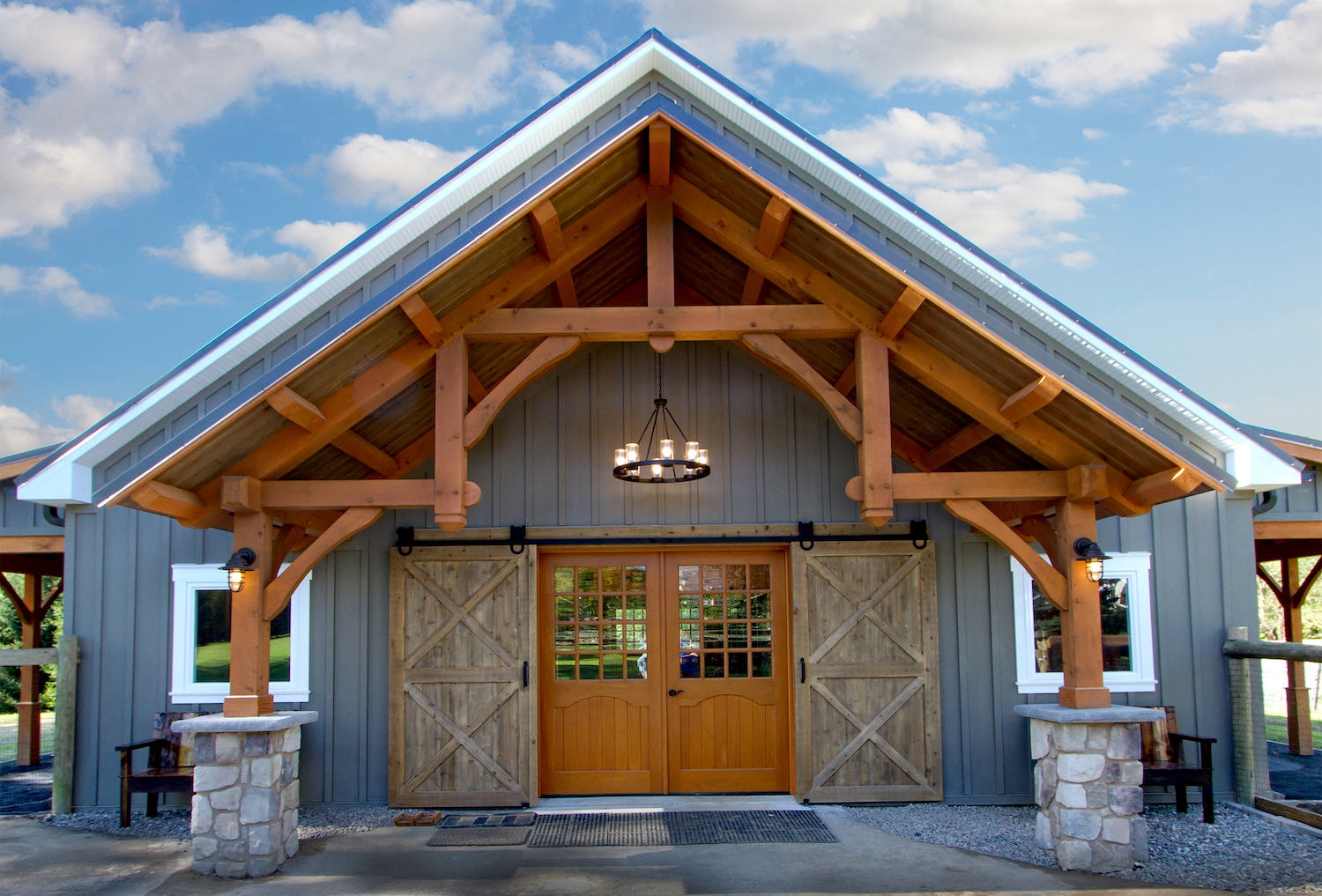A greater thickness of padding can be provided. An external wall cavity isn’t required in wood presented house construction, provided that an appropriate vapour get a grip on layer is incorporated on the warm area (in winter) of the insulation.

Timber framed home structure can achieve U-values somewhat better compared to minimums needed by current building standards. A typical wood studding wall includes a water-resistant breather membrane, sheathing board, structural wood framing, vapour barrier and inner lining of plasterboard. Insulation is fitted between the uprights of the timber body, generally filling the full thickness of the additional wall. Where higher than standard criteria of insulation are needed, a larger outside wall may be constructed.
Outside walls could be confronted with load keeping brickwork or concrete rendered blockwork to offer the looks of traditional houses. Several light cladding components will also be available including: tiling, slating, Timber Framed Houses Devon boarding, forest shingles, concrete render on lathing, along with exclusive rainscreen cladding solutions.
Wood structures may be made a great deal more quickly than masonry cavity wall structure, since the timbers are reduce below quality controlled factory conditions. The absence of moist trades internally effects in decreased becoming dry time. Faster time on site indicates a smaller complete build programme.
The get a handle on of air infiltration is a vital element in prefabricated properties, as that increases the thermal performance and reduces running costs. If the kept heat is lost through unwelcome air leakage then you will see no benefit from large levels of insulation. Air rigidity may be controlled by firmly installing structural sections with overlapped plasterboard linings, as well as by the vapour buffer that’s based behind the wall panels.
UK building rules involve outside walls to possess large thermal efficiency levels through high degrees of padding and air tightness. Toughness of the covered timber frame is an important necessity, as surfaces require to provide support for the cladding materials. Additional surfaces are needed to possess correct fireplace opposition and resistance to the spread of flame. Housing warranty and assure authorities could have additional needs for facets of the wood construction such as sheathing products, breather membranes and the preservative therapy of the outside wall framing.
Folks are discovering normal, sustainable, and eco-friendly home options significantly more than actually before. The traditional stick body house of today is normally developed quickly and cheaply, with small respect to energy efficiency, longevity, elegance, or ecological design. Nevertheless, the wood body home, using its extended and established record, is an excellent option to the normal home of modern times. Using large threads and beams with timber joinery and wood pegs (that means no screws, fingernails, or material fasteners), they highlight toughness, energy, energy performance, and wonderful design.
A wood body is normally more inexpensive when compared to a stay body house. There’s less wood waste in the production of the necessary elements — big posts, supports, etc. Similarly, big posts and supports take higher advantageous asset of the normal energy of a tree, in place of significantly smaller dimensional limber. Not just that, but it’s exceptional that large timbers are shipped over extended distances because of their utter size and fat — wood figure structure actually encourages (and nearly demands) the utilization of local resources.
Since timber surrounding employs large articles and beams, the wood customers have a much longer expected life than the 2x4s of a normal house — in reality, you will find houses that are hundreds of years old. Some state timber structures get tougher as time passes because the wood cures and hardens. Furthermore, they are more resilient to the consequences of earthquakes, powerful winds, and major snow masses, and have lower rates of replacement. If that was not enough, large timber structure is significantly more fire-resistant than other forms of construction. The advantages are loved by decades of families.
